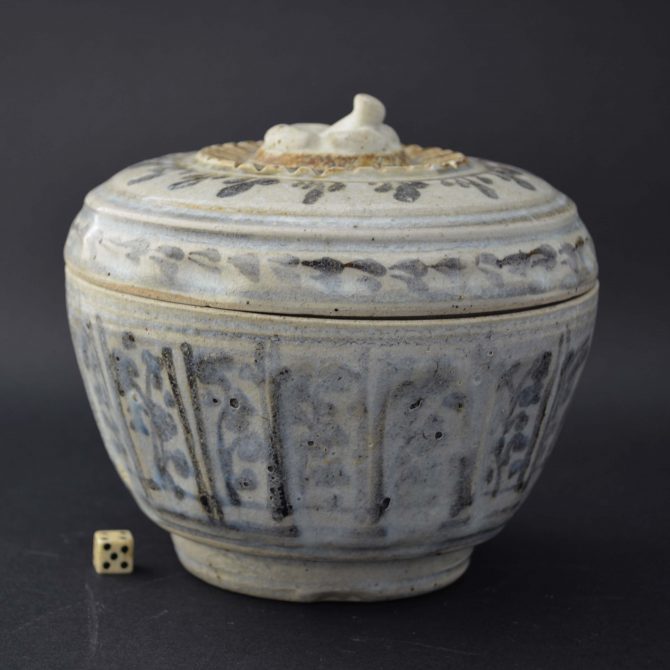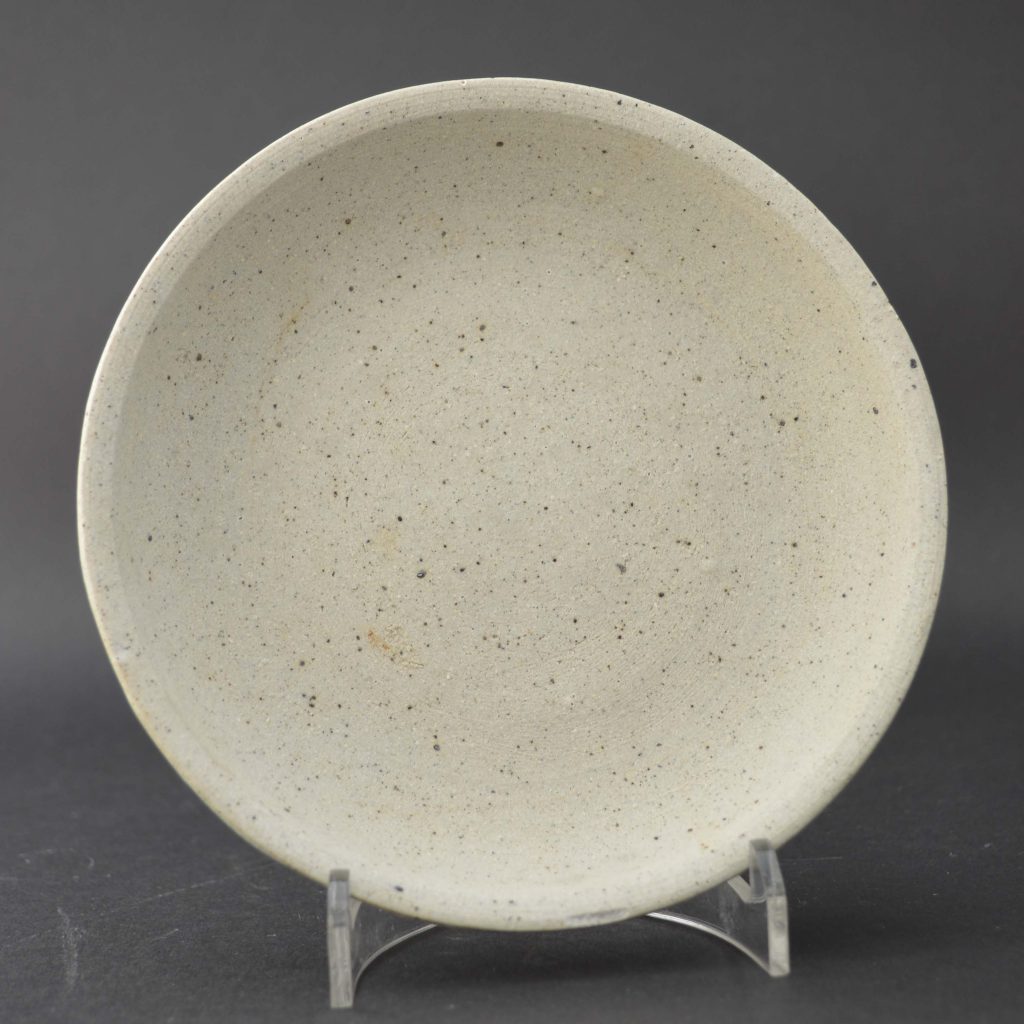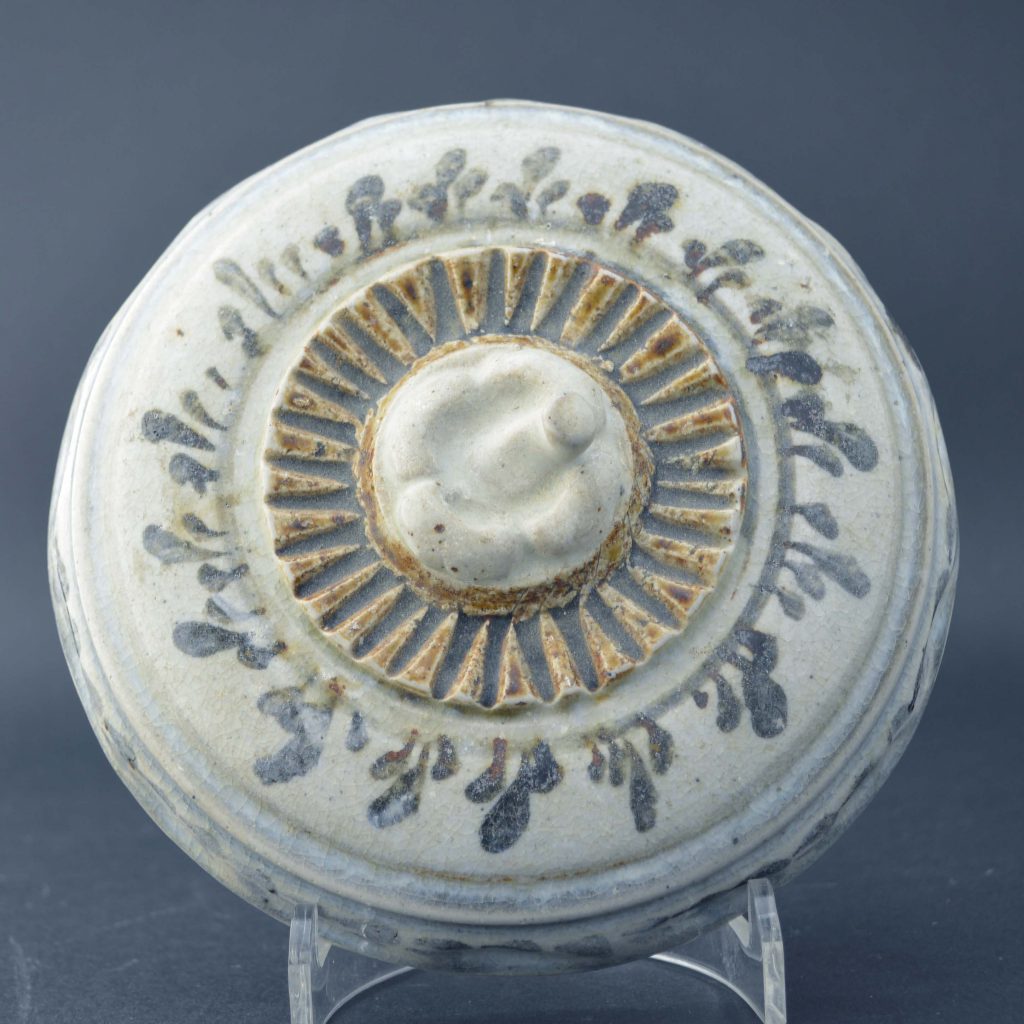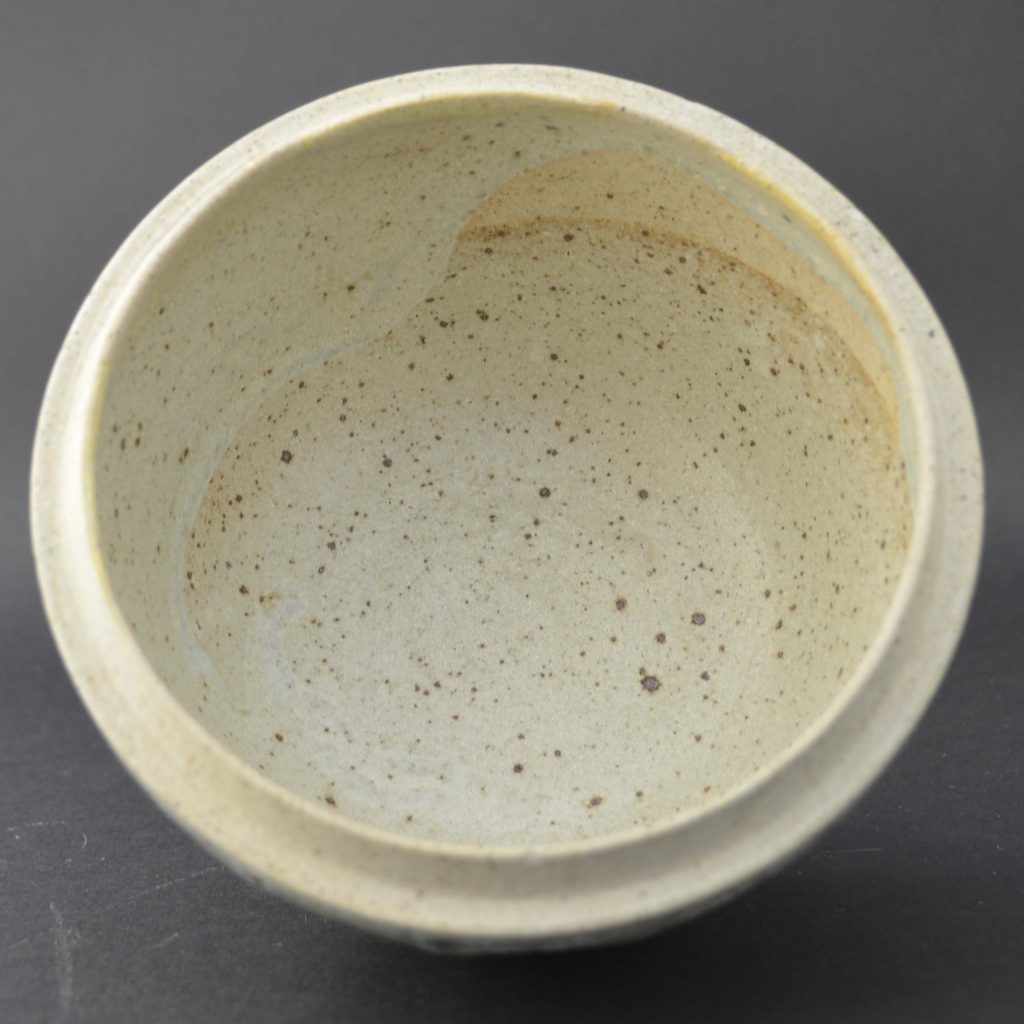
A Thai Stoneware Box and Cover, Si Satchanalai kilns, 14th to 16th Century.
A Thai stoneware box and cover from the Si Satchanalai kilns, 14th to 16th Century. Decorated with iron-oxide.
- Condition
- The unglazed rim to the base of the box that is hidden by the cover has some restored chips c.45 x 10 mm, 40 x 10 mm, 12 x 12 mm.
- Size
- Height : 12 cm (4 3/4 inches).
- Provenance
- Dr. Desmond Laurence, R and G McPherson June 2000. NICOLAS THOMPSON COLLECTION : Nicholas de la Mare Thompson (1928-2010), the grandson of the author Walter de la Mare spent his career in publishing. He started at Nesbit where he was editor of the Janet and John series of children’s books but not all of his career was so safe. He wrestled with W.H. Smith over the content of Madonna’s raunchy Sex book on behalf of Paul Hamlyn’s Octopus Group and defeated Margaret Thatcher over Spycatcher. He could not bare dogma or hypocrisy. It was hardly surprising that as a committee member of the O.C.S. he had his own ideas. He read and could recite great swaths of the articles of the Society, he used this not to attack but to stimulate debate. He approached the Society in the same way as he approached his understanding of Chinese ceramics, by stripping it down and starting again using clear empirical thinking. He was very concerned the Society was open to all and was run for the benefit of all members. Nicholas came from a family of collectors, his love of oriental ceramics was broad but his focus was on early monochromes, especially those from the Song dynasty. He bought what he loved, what he thought had merit, not what was said to be good, and certainly not anything because it was fashionable. He didn’t have a stamp collectors approach, filling in the gaps of pre-existing ordered collection, rather he would react to an object, feeling it was right for his collection. Sometimes he wasn’t sure if it was right for his collection or not. He would then “borrow” pieces and live with them, other times he would ask his wife Caroline, who’s eye he trusted, if he should keep the piece or not. He was amused because I was often able to know if he would keep a piece before he did. We discussed “pots” endlessly, he loved to talk about ceramics with a wide variety of people, and enjoyed the company of others on O.C.S. trips as well as in discussion groups or anywhere else. Later on he combined his love of Chinese ceramics with his love of books by extending his library to include rare early books, he used these to trace the development of collecting and scholarship in the 19th and early 20th century. He was fascinated by earlier scholarship, what was not understood but also what they understood and we have lost. He was always reading and wanted to know more right up to the end, he didn’t see impending death as a barrier to knowledge or indeed collecting. The week before he died he questioned, if only for a second, whether it was too late to buy another pot for the collection. He concluded it was not, he was a true collector. Nicolas died on the 25th of April 2010 at the age of 82 after living with cancer for two years. He leaves behind his energetically supportive wife Caroline and his three children. He was a kind, gentle and incredibly civilised man with a very sharp mind and dry sense of humour, he was passionate about the Society, its aims and its members. He was an incredibly supportive and thoughtful friend and is very much missed .
- Stock number
- 24883
Information
Si Satchanalai / Sawankhalok :
The Si Satchanalai kilns on the river Yom in north-central Thailand are to the north of the town of Sawankhalok. When I started studying oriental ceramics Sawankhalok was the name used to describe the high-fired stoneware that is now known to have come from Si Satchanalai. This kiln site is north of the other large Thai ceramics production center of Sukhothai. Both centers of production were under the cultural direction of the Sukhothai kingdom. Archaeological evidence supports a production period starting as early as the 14th century and coming to an end in the 16th century. Export ware as well as domestic wares and architectural ceramics were made of high-fired stoneware with decoration in iron-oxide, monochrome brown or celadon glazes.



